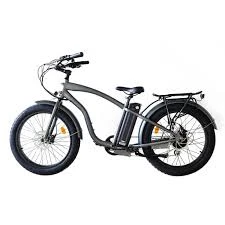Mar . 03, 2025 13:44 Back to list
how to adjust derailleur mountain bike


Having the rear derailleur operating optimally, proceed to the front derailleur. This component dictates the chain's movement between chainrings. Verify first that the derailleur is mounted at an appropriate height and is parallel to the chainrings. Ideally, the outer cage should sit about 1-3 millimeters above the largest chainring. Correct any misalignments by loosening the mounting bolt and adjusting the derailleur’s position as needed. Fine-tune the front derailleur using its own limit screws. Start with the lower limit screw by shifting the chain onto the smallest chainring and the largest rear cassette cog. The chain should pass closely but not rub the inner cage plate. Adjust accordingly. Once in the largest chainring and smallest rear cog, ensure the outer cage plate is similarly positioned relative to the chain. If necessary, tweak the upper limit screw. Fine adjustments can be made with the barrel adjuster, if applicable. After fine-tuning both derailleurs, check the performance by shifting through all gears, ensuring a crisp and responsive transition. Towards the end, a gentle clean and application of lubricant on the derailleur components and chain finalize the process, enhancing longevity and performance. Implementing these adjustments with expertise bolsters your bike’s efficiency and enriches your riding experience. Regular maintenance of the derailleur and timely adjustments preempt longer-term mechanical issues, ensuring sustained mountain biking enjoyment. Conclusively, with practice, adjusting your derailleur becomes second nature, lending authority and reliance to your biking excursions.
-
In-Depth Guide to Ebike Frames: Design, Use & Future Trends
NewsNov.25,2025
-
Discover Top E Bike Brand Insights, Specs & Future Trends | Yanline Bike
NewsNov.24,2025
-
Green E Bike – The Future of Sustainable Urban Mobility
NewsNov.24,2025
-
Ruffian eBike: Durable, Efficient Electric Bikes for Modern Mobility
NewsNov.23,2025
-
Comprehensive Guide to the Global E Bike Market and Future Trends
NewsNov.23,2025
-
Understanding Electric Bicycle Range: A Complete Guide for Smarter E-Bike Use
NewsNov.22,2025
-
Ceron Electric Bike – Efficient, Sustainable Urban Mobility Solutions
NewsNov.22,2025




